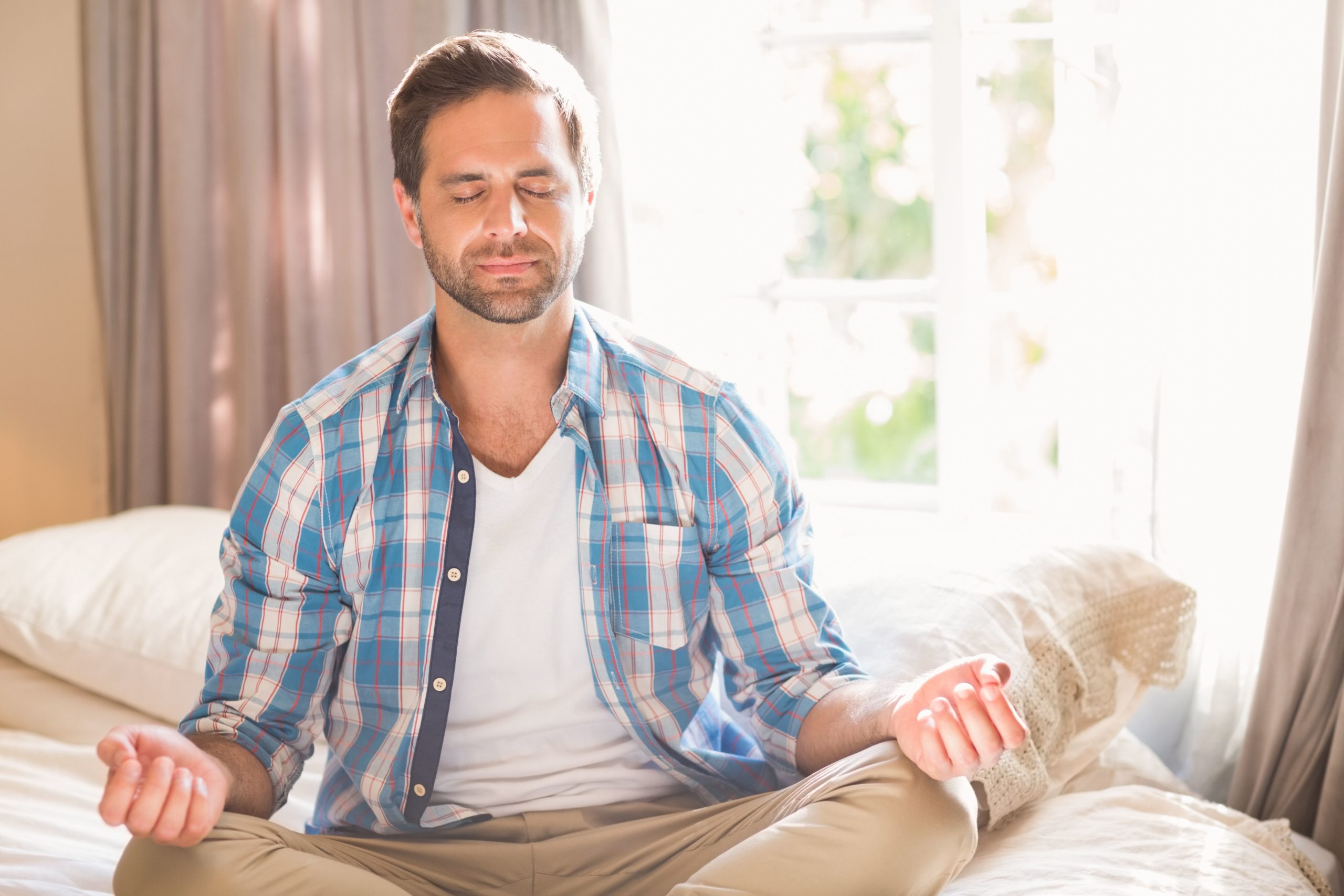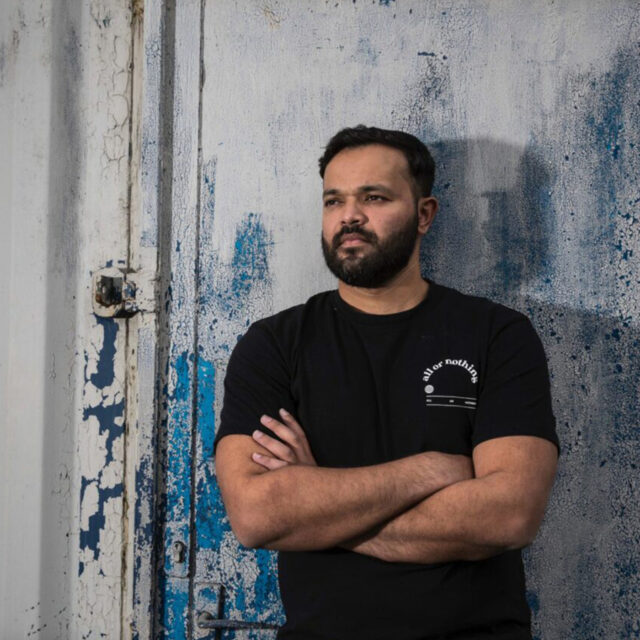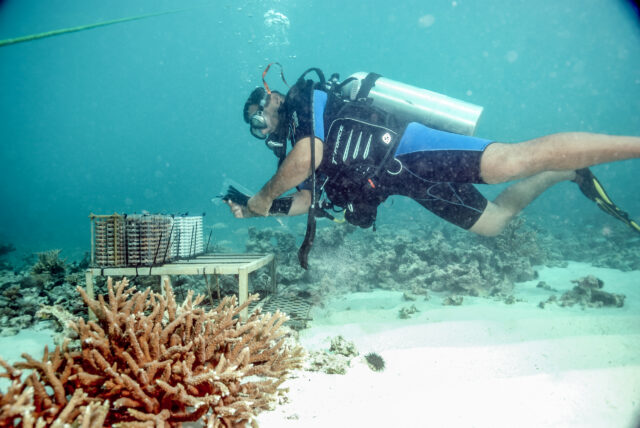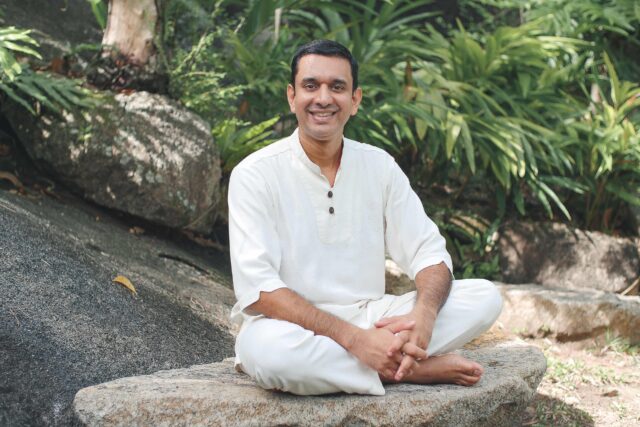I decided to meditate for a month after experiencing a dramatic improvement in my sleep by listening to guided meditations. I used to be a person who couldn’t fall asleep until after midnight and even then I would often lie in bed awake for an hour or more ruminating on the day. After starting to listen regularly to guided meditations, I was dropping off in five minutes and sleeping more soundly then I ever had before. It seemed to me that there was something to this meditation stuff and I wanted to see what else was out there.
Also, I was working on being present in the moment and not so distracted, especially by social media and my phone. I’ve known it was a problem for years, but reading Digital Minimalism by Cal Newport really brought the issue home and made me want to get serious about not wasting my life in a screen-riddled haze. I knew that mindfulness would be a key to regaining focus and fending off distractions, so I started consuming podcasts and articles about it to try to get a better idea of what it was and how to do it usefully.
That brought me to the book Stillness is the Key by Ryan Holiday. I think everyone should read this book. It gives real, concrete advice on how to live a calmer, less anxious life, drawing from a variety of different spiritual traditions and science. It also turned me on to Vietnamese Zen Buddhist master Thich Nhat Hanh.
“After recognizing and embracing our inner child, the third function of mindfulness is to soothe and relieve our difficult emotions,” he says. “Just by holding this child gently, we are soothing our difficult emotions and we can begin to feel at ease. When we embrace our strong emotions with mindfulness and concentration, we’ll be able to see the roots of these mental formations. We’ll know where our suffering has come from. When we see the roots of things, our suffering will lessen. So mindfulness recognizes, embraces and relieves.”
All of these things kept pointing me in the direction of formal meditation. This is where you sit (or walk) quietly, with the intention of meditating. There are plenty of types of formal meditation, but a good general categorization is when you have an object of focus, like your breath or a repeated word, you can use it to bring your attention back to the point of focus when thoughts distract you.
When I’ve tried to meditate in years past, I didn’t really know what to do. All I knew was that I hadn’t been able to get rid of my thoughts, so I thought I was unable to meditate. But when I took up yoga, I learned that with practice and attention I could improve at things I’d previously considered impossible. I realized that if I was serious about meditation, I just needed to do some good research and then put it into practice.
What is my practice?
- Sit up straight in bed with my back to my padded headboard. Wear loose, comfortable clothing. Lights are fine, but music or other noise should be turned off.
- Start a timer (I started at five minutes and gradually worked up to 20 minutes). I use the Plum Village App 20-minute timer with four intervals. I like the intervals because without them I tend to just wonder how long I’ve been going.
- I focus on taking large breaths in through my nose and out through my mouth, four seconds each, that fill up my lungs.
- I focus on following the breath in as it goes through my nose and fills up the lungs, then out as it goes through my lips, with my lips slightly pursed.
- When my attention wanders – and it does pretty frequently – I just bring my attention back to my breath and don’t worry about it. Your thoughts will happen – that’s the brain doing its job – so don’t get angry or frustrated, just focus back on your breath.
- Once I’ve done this for a minute or so, I count my breaths, in, out, 1; in, out 2; in, out 3. I do this up to 10 and then back to 0.
- I will do a body scan where I start at my feet then work my way up each leg pausing a few inches/centimeters at a time, moving with the breath, so I’ll take a new spot with each inhale and exhale. While I do this, I breathe naturally through my nose as quietly as possible. I also look for parts of my body that may be tense and I let my attention rest there and relax the spot. This is especially true for facial muscles that tense up a lot.
- I focus on my pulse and heartbeat. I see how long I can maintain my focus on that and feel my blood go around my body. More on this later.
- I watch the inside of my eyelids. The visuals are crazy. Again, more on this later.
Some tips
- I can’t do this too late at night, or else I’ll fall asleep. In the daytime is better. But it’s OK to do it if I’m trying to fall asleep.
- Some days it’s better, some days it’s worse. Be patient with yourself and build up your stamina slowly.
Now the wow
Science has pretty well established that meditation has some great physical benefits, from lowering blood pressure, lowering stress (and all the terrible diseases that come with prolonged periods of it), increasing longevity, helping to deal with trauma and lowering inflammation. All that is great, and I’ve already seen my blood pressure drop 10 points, but I’ve felt the start of some other really interesting effects which have blown me away.
- The body scanning (step 7 above) has allowed me to be far more aware of my circulation. It started out with just feeling my pulse faintly in my fingertips when I was focused on them, then fairly quickly I was able to feel my pulse all through my body, including in my heart. I don’t just feel it, it’s like a circular wave and very distinct. I can quiet myself so effectively now that without a lot of effort, I can feel my blood rush through my body.
- I think I’m able to slow down my heartbeat. This one is just getting started but it’s building off the previous point. As a percussionist, I have a pretty good handle on tempo and I can feel my heart beating at one tempo, then I’ll will it to slow down. And it will. As slower heartbeats have been connected to increased longevity, this seems important.
- I notice patterns in my closed eyelids. They kind of remind me of the old Windows Music Visualizer from the 90s. It’s extremely cool and I could watch it happily for a while.
- This is not a boring experience. It’s fascinating and I’m getting to know my body better than I’ve ever known it before. I look forward to this every day.
- I am much more familiar with what my “baseline” for mental activity is. I am more aware of when I’m anxious or in an obsessive thought loop, and I now know how to get out of it. I’m calmer because of this, because I have far more control over my mental state.
- That lack of anxiety has made me happier and more positive.
- I’ve found out I can combine this habit with drinking healthy tea. I put the tea on and let it steep while I meditate for 20 minutes and when I’ve finished I have a lovely mug of tea waiting for me. Meditation, antioxidants from the hibiscus tea, and hydration – a winning combination.
- It’s another fantastic, high-quality, zero-cost leisure activity. This is free, fascinating and beneficial. For my frugal nature, it’s pretty much perfection.
- I’m incredibly curious as to where this will take me. If I can feel my pulse now, what’s next?
Right now, I’d recommend this to everyone. Even if you’re thinking that you don’t have time to spend 20 minutes a day on this, think of it as missing one short sitcom episode a day. You can give that up for this. Twenty minutes less of Instagram or Facebook, two fewer Youtube videos. That’s not much of a sacrifice. You can even do it with other people if you want to share it with a friend or spouse or partner or whatever. If you want to start out with guided meditations, go for it, especially for sleep. But I do think that it’s better to work your way toward the silent meditation, because it’s in the silence that you can really hear your body and your mind and learn to discipline it by returning your attention to the breath when your thoughts wander.
• This article was originally published on June 1, 2020






